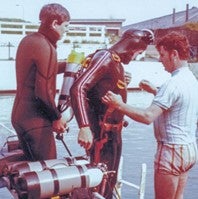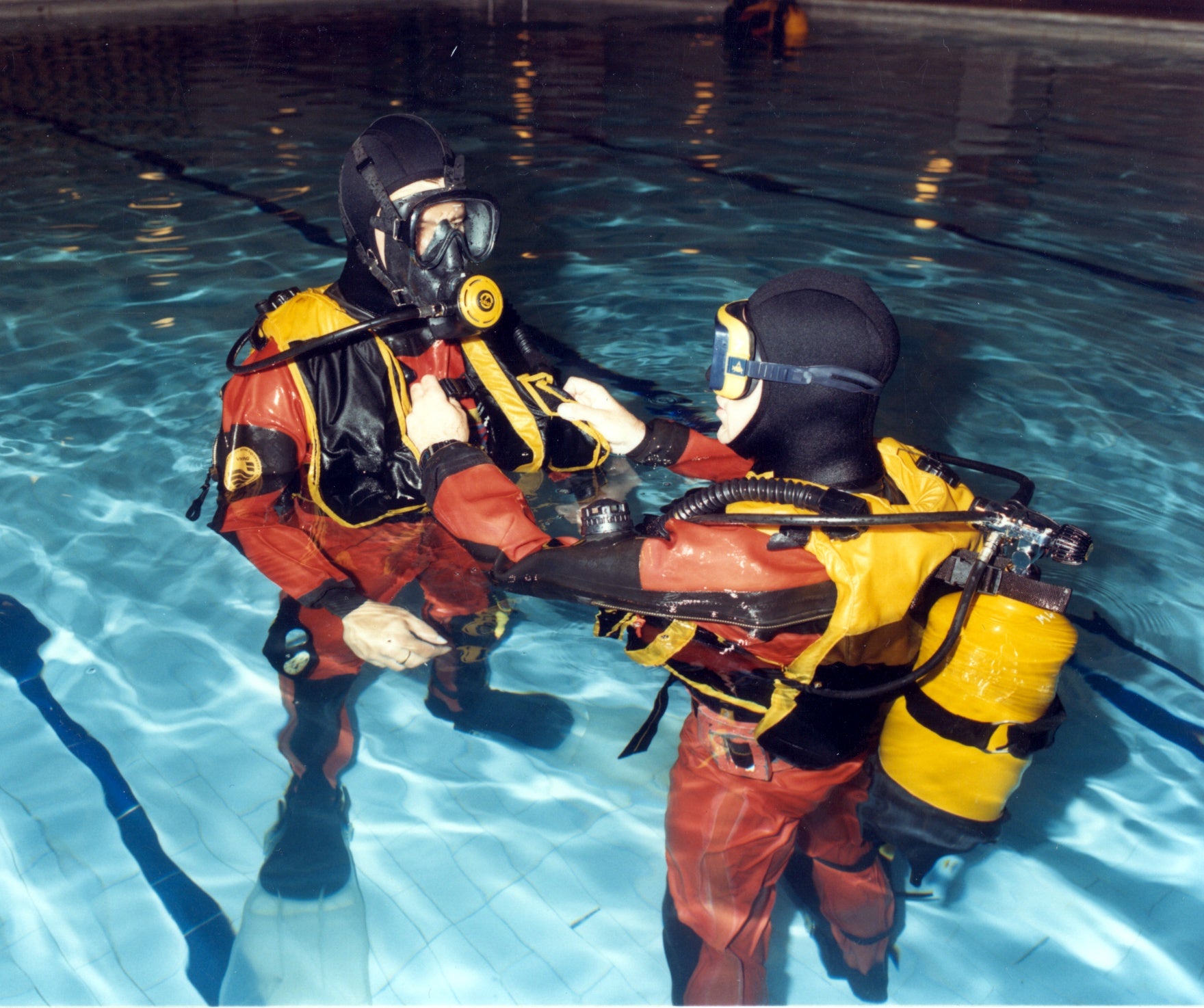MRS Training & Rescue has a rich, long mines rescue history here in the UK. Our teams of highly trained professionals have played a vital role in the safety of miners for over a century.
In this article we look back at our diving teams – and the vital role they played in mines rescues. We look at the skills these brave divers held and highlight the important roles they played in the history of the mining industry in the UK.
Our Mines Diving Rescue History
MRS Training & Rescue was established in the early 1900s – following a series of devastating mining accidents. The purpose of our service when created was to provide trained and equipped response teams for mining emergencies such as fires, explosions, and cave-ins.
Today – we continue to provide mines rescue services, but have diversified to provide many other training and rescue services. We provide rescue services to a wide range of industries, as well as training courses from first aid to specialist wind turbine courses.
Following the Lofthouse Colliery disaster in 1973, in which seven miners tragically drowned after a huge inrush of water trapped them – the Mines (Precautions Against Inrushes) Regulations 1979 were introduced – and diving teams, each comprising of 8 mines rescuers, were created.
Our first mines diving team was based at our station in Tyne & Wear and in the mid-1980s, was relocated to our training centre in Mansfield, Nottinghamshire.

Mines Diving Skills
The training that the mines diving teams had to undertake was extensive and rigorous. They were required to complete a series of courses and tests, covering a wide range of diving techniques, as well as survival skills, first aid, and communication. The training also emphasized the importance of teamwork, as diving teams often had to work in challenging and hazardous conditions. In addition, the divers were required to undergo regular physical fitness tests to ensure that they were in top shape for their demanding role.
All had to achieve a British Sub Aqua Club (BSAC) Advanced Diver Level certificate and had to complete one dive every month as a minimum to maintain their competency. They also had to do at least one week’s diving at the coast each year and ensured this was done in areas of poor visibility to gain experience and exposure to the murky water they would face in the event of a coal field flooding.
Equipment included divator full face diving masks – a full face mask that was completely sealed to ensure no contamination – designed to be worn in contaminated or thick, gloopy water, as found in mines.

Diving in Mining Emergencies
Our diving teams played a crucial role in the event of a mining emergency. Their skills and expertise allowed them to provide critical support to miners in danger, and to carry out underwater search and rescue missions with confidence and efficiency.
The primary role of the diving team was to lay safety lines/ropes as a guide for mines rescue teams to follow to enable them to travel through water in the event of a mine becoming flooded. The dive team always entered any flooded area first so there was a clear route to follow.
All mines rescue operatives – who were all part time as they all worked for the nearby collieries as well - were required to undertake water rescue training as well. And when the dive team moved to Mansfield, this meant training 270 part time rescue workers from the collieries. This training included confidence in the water and being able to follow a guide rope whilst blindfolded – to simulate what it would be like doing this through mine water which would be black, very muddy, and full of silt.
Our diving teams provide specialised training and support to the mining industry. Through training programmes and workshops, the teams educated miners and other industry professionals on best practices and techniques for underwater operations, including emergency response and disaster management. This helped to build a culture of safety within the industry and ensured that miners were prepared to respond quickly and effectively in the event of an underwater emergency.
Water and Diving Rescue Today
The UK Health and Safety Executive (HSE) previously granted an exemption for Mines Rescue diving teams. However, this exemption was later revoked, and despite extensive research, there was not a suitable training program, leading to the eventual disbandment of our teams.
Today, MRS Training & Rescue continue to be leaders in mines rescue and training, as well as providing training and rescue services to many other sectors. Part of what we offer today is water rescue services – that are suitable to anyone working on or near water. Whilst we do not offer diving rescue services today, our teams are trained and equipped to respond to emergencies and save lives in hazardous environments – such as underground mines or bodies of water.
Our rescue teams comprise of highly trained personnel with specialised skills and equipment to handle various types of emergencies and rescue operations. Their duties include responding to accidents, conducting rescue and recovery operations, and providing medical assistance as needed. The training and equipment used by these teams has evolved over time to keep pace with the changing technology and safety needs of the industries they serve.
To learn more about our rescue teams or the services we provide visit our rescue page or contact us.




